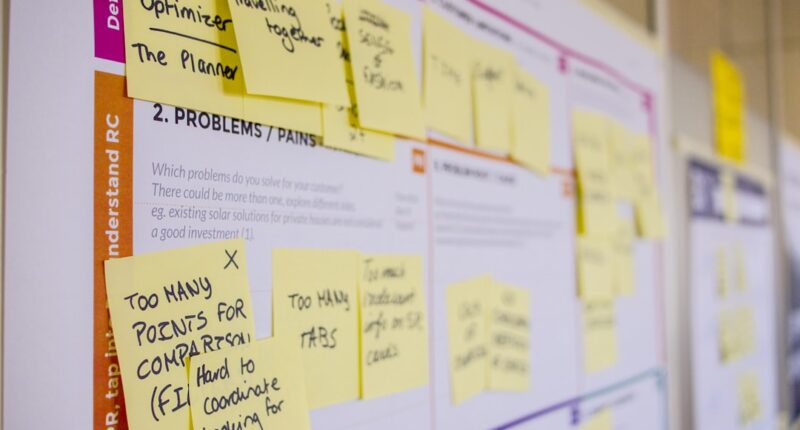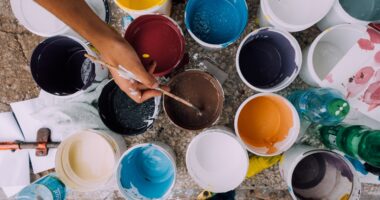NFTs, or non-fungible tokens, are unique digital assets stored on a blockchain, which is a decentralized and distributed digital ledger. Unlike fungible cryptocurrencies such as Bitcoin or Ethereum, NFTs cannot be exchanged on a one-to-one basis due to their non-fungible nature. The blockchain technology underlying NFTs provides a secure and transparent method for tracking ownership and provenance of digital assets.
When an artist creates an NFT, they generate a digital certificate of ownership stored on the blockchain. This certificate contains metadata describing the digital artwork, including the artist’s name, creation date, and any additional information the artist chooses to include. The metadata gives each NFT its uniqueness and value.
The blockchain ensures that the ownership and transaction history of NFTs are publicly verifiable and tamper-proof, offering a level of trust and authenticity often lacking in the digital art world. This technology has provided artists with a new means to monetize their digital creations, as each NFT represents a one-of-a-kind asset that cannot be replicated or exchanged on a like-for-like basis.
Key Takeaways
- NFTs are digital assets that represent ownership or proof of authenticity of a unique item or piece of content on the blockchain.
- When choosing a platform for minting NFTs, consider factors such as fees, user interface, community support, and marketplace integration.
- When creating and uploading digital artwork for NFTs, ensure that the file meets the platform’s specifications and consider adding metadata to provide more context and information about the artwork.
- Setting up a wallet and connecting to the blockchain is essential for minting NFTs, as it allows you to store and manage your digital assets securely.
- Minting your NFT involves uploading your digital artwork, setting a price, and paying the associated gas fees to complete the transaction on the blockchain.
- Promoting and selling your NFT can be done through social media, NFT marketplaces, and online communities, and it’s important to engage with potential buyers and collectors.
- Staying informed about the latest Ethereum (ETH) and Bitcoin (BTC) news in the NFT space can help you understand market trends, new developments, and potential opportunities for your NFTs.
Choosing the Right Platform for Minting NFTs
Popular Platforms for Minting NFTs
One of the most well-known platforms is OpenSea, which allows artists to mint, buy, and sell NFTs with ease. OpenSea supports a wide range of digital artwork, including images, videos, music, and more, making it a versatile option for artists working in different mediums.
Customizable Options for Artists
Another popular platform is Rarible, which offers a more customizable approach to minting NFTs. Artists can create their own storefront on Rarible and customize their NFTs with unlockable content, royalties, and more. This gives artists more control over their NFTs and allows them to create a unique experience for collectors.
Exclusive and High-End Digital Artwork
Additionally, platforms like Foundation and SuperRare cater to more exclusive and high-end digital artwork, offering a curated selection of NFTs and a focus on quality over quantity. Ultimately, the right platform for minting NFTs will depend on the artist’s specific needs and goals. Whether they are looking for a user-friendly interface, customizable features, or a curated marketplace, there are plenty of options available for artists to explore.
Creating and Uploading Your Digital Artwork

Once you’ve chosen the right platform for minting NFTs, the next step is to create and upload your digital artwork. Whether you’re a digital artist, photographer, musician, or any other type of creator, there are a few key considerations to keep in mind when preparing your artwork for minting as an NFT. First and foremost, it’s important to ensure that your digital artwork is of high quality and resolution.
This will not only make your artwork more appealing to potential collectors but also ensure that it looks its best when displayed as an NFT. In addition to quality, it’s also important to consider the uniqueness and scarcity of your digital artwork. NFTs derive their value from their uniqueness and scarcity, so it’s important to create something that stands out and cannot be easily replicated.
This could mean creating a limited edition series of digital artwork or adding special unlockable content or experiences for collectors. Finally, when uploading your digital artwork to the chosen platform, be sure to include detailed metadata that describes the piece and provides additional context for potential collectors. This could include information about the creation process, inspiration behind the artwork, or any other relevant details that add value to the NFT.
In summary, creating and uploading your digital artwork for minting as an NFT involves ensuring high quality and resolution, creating uniqueness and scarcity, and providing detailed metadata to add value for potential collectors.
Setting Up Your Wallet and Connecting to the Blockchain
Before you can mint your NFT, you’ll need to set up a digital wallet and connect it to the blockchain. A digital wallet is essentially a software program that allows you to store, send, and receive cryptocurrencies and NFTs. There are several different types of wallets available, including web-based wallets, mobile wallets, desktop wallets, and hardware wallets.
Each type of wallet has its own set of features and security considerations, so it’s important to choose one that best fits your needs. Once you’ve chosen a wallet, you’ll need to connect it to the blockchain in order to mint your NFT. This typically involves connecting your wallet to the chosen platform using a process called “wallet integration.” This allows you to sign transactions on the blockchain using your wallet’s private keys, which are used to prove ownership of your digital assets.
It’s important to follow the platform’s specific instructions for wallet integration carefully to ensure a secure connection to the blockchain. In summary, setting up your wallet and connecting it to the blockchain involves choosing a digital wallet that best fits your needs and following the platform’s specific instructions for wallet integration to ensure a secure connection for minting your NFT.
Minting Your NFT and Setting a Price
Once your wallet is set up and connected to the blockchain, you’re ready to mint your NFT and set a price for it. Minting an NFT typically involves uploading your digital artwork to the chosen platform, adding detailed metadata that describes the piece, and paying a small fee to create the token on the blockchain. This fee is known as “gas” and is used to compensate miners for validating and processing transactions on the blockchain.
After minting your NFT, you’ll have the option to set a price for it in cryptocurrency. This could be in Ethereum (ETH), Bitcoin (BTC), or any other supported cryptocurrency depending on the platform. When setting a price for your NFT, it’s important to consider factors such as the quality and uniqueness of your digital artwork, current market trends, and the overall demand for similar NFTs.
Additionally, some platforms allow artists to earn royalties on secondary sales of their NFTs, so it’s important to consider this when setting the initial price. In summary, minting your NFT involves uploading your digital artwork to the chosen platform, paying a small fee to create the token on the blockchain, and setting a price in cryptocurrency based on various factors such as quality, uniqueness, market trends, and potential royalties.
Promoting and Selling Your NFT

Building Visibility on Social Media
Once your NFT is minted and listed for sale on the chosen platform, it’s time to promote and sell it to potential collectors. One effective strategy is leveraging social media platforms such as Twitter, Instagram, and TikTok to showcase your digital artwork and engage with potential collectors. Sharing behind-the-scenes content about your creative process or offering exclusive previews of upcoming releases can help generate interest in your NFTs.
Collaborating with Other Artists and Influencers
Another strategy is collaborating with other artists or influencers in the NFT space to cross-promote each other’s work. This can help expand your reach and introduce your NFTs to new audiences who may be interested in collecting digital artwork.
Participating in Online Communities
Additionally, participating in online communities and forums dedicated to NFTs can help build relationships with potential collectors and gain valuable feedback on your work.
In summary, promoting and selling your NFT involves leveraging social media platforms, collaborating with other artists or influencers, and participating in online communities dedicated to NFTs to increase visibility and attract potential collectors.
Staying Informed about the Latest Ethereum (ETH) and Bitcoin (BTC) News in the NFT Space
As an artist entering the world of NFTs, it’s important to stay informed about the latest news and developments in the Ethereum (ETH) and Bitcoin (BTC) space as they relate to NFTs. Both Ethereum and Bitcoin are widely used cryptocurrencies for buying and selling NFTs, so staying up-to-date with their market trends can help you make informed decisions about pricing your NFTs and understanding collector behavior. One way to stay informed is by following reputable cryptocurrency news sources such as CoinDesk or CoinTelegraph, which provide regular updates on market trends, regulatory developments, and technological advancements in the Ethereum (ETH) and Bitcoin (BTC) space.
Additionally, joining online communities dedicated to NFTs on platforms like Discord or Clubhouse can provide valuable insights from other artists and collectors who are actively involved in the space. In summary, staying informed about the latest Ethereum (ETH) and Bitcoin (BTC) news in the NFT space involves following reputable cryptocurrency news sources and joining online communities dedicated to NFTs to gain valuable insights from other artists and collectors.
FAQs
What is NFT?
NFT stands for non-fungible token, which is a digital asset that represents ownership or proof of authenticity of a unique item or piece of content, such as digital art, videos, music, and more.
What is minting an NFT?
Minting an NFT refers to the process of creating and tokenizing a digital asset on a blockchain, such as Ethereum. This process involves uploading the digital file, adding metadata, and creating a unique token that represents ownership of the asset.
How do I mint an NFT?
To mint an NFT, you will need to choose a blockchain platform that supports NFTs, such as Ethereum or Binance Smart Chain, create a digital wallet, choose a marketplace or platform to mint the NFT, and follow their specific instructions for uploading your digital file and creating the NFT.
What are the costs associated with minting an NFT?
The costs associated with minting an NFT can include gas fees (transaction fees) on the blockchain, platform or marketplace fees, and potentially fees for creating and verifying the digital asset.
What are the benefits of minting an NFT?
Minting an NFT can provide creators with a new way to monetize their digital art and other content, as well as establish provenance and ownership of their work through the blockchain. NFTs also allow for royalties to be built into the smart contract, so creators can earn ongoing income from resales of their work.
What should I consider before minting an NFT?
Before minting an NFT, it’s important to consider the environmental impact of blockchain transactions, the potential for copyright infringement or plagiarism, the long-term value and demand for the digital asset, and the terms and conditions of the platform or marketplace where you plan to mint the NFT.





